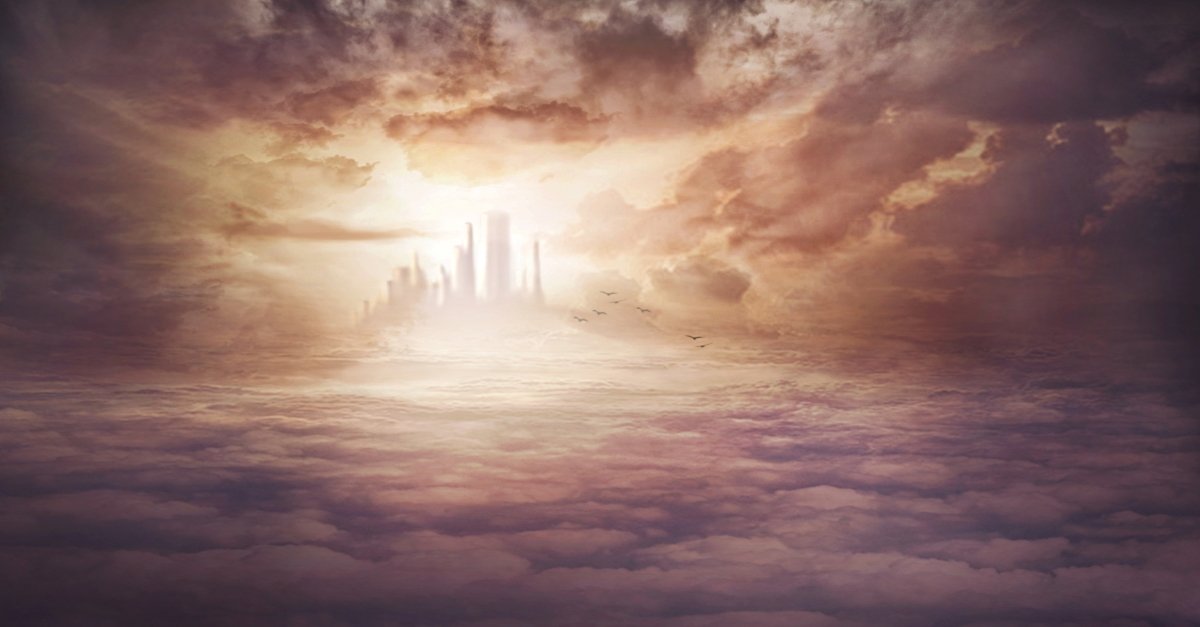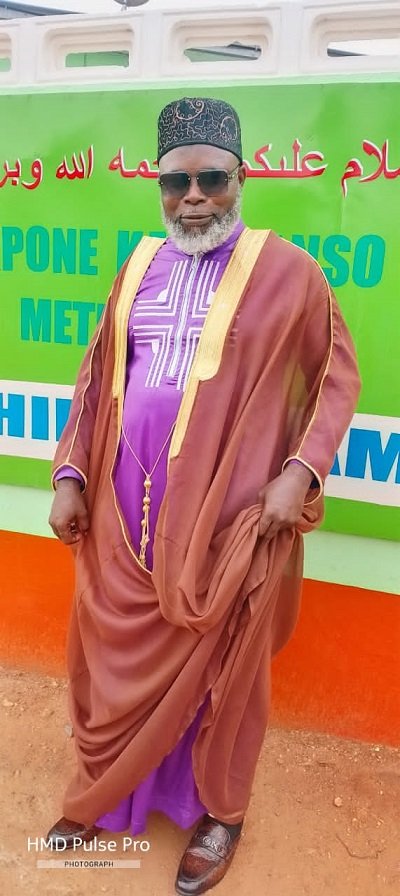Fruitful Living
What Will Heaven Be Like?

Heaven is a place of hope
Look! God’s dwelling place is now among the people, and He will dwell with them. They will be His people, and God Himself will be with them and be their God.”
— Revelation 21:3
Introduction
As we journey through life, the thought of a future home with Jesus fills our hearts with peace and anticipation. Heaven is not just an abstract idea or a distant place, but it is God’s promised home for those who believe in Him. Today, we will explore what heaven will be like according to Scripture, how it intersects with the new earth, and why this promise is central to our faith.
1. Heaven: God’s Dwelling Place
Heaven is described as the central dwelling place of God, where He rules the universe from His throne. Although God is omnipresent, heaven is uniquely where His glory is most fully displayed. The Bible promises that when Christians die, they immediately go to heaven to be with Christ (Luke 23:43). However, this is not the final destination. One day, God will bring heaven down to earth, transforming the current heaven into what the Bible calls the “new heaven and new earth.”
This concept is revolutionary. While many imagine that heaven is a place where believers escape the troubles of the earth, the Bible reveals that God’s ultimate plan is to dwell with His people on a renewed earth. As Revelation 21:1 says, “Then I saw ‘a new heaven and a new earth,’ for the first heaven and the first earth had passed away.”
2. Heaven on Earth: The New Creation
God’s plan has always included not only redeeming humanity but also restoring creation. The fall of Adam and Eve affected not only mankind but the entire universe. However, God’s redemption plan extends to all of creation. Isaiah 65:17 promises, “See, I will create new heavens and a new earth.” This new earth will be free from sin, corruption, and death.
The future heaven, or new earth, will be a place where the glory of God is fully revealed. Jesus’ resurrection secured this future, as His victory over sin and death ensures that all of creation will be renewed. It will be a place of perfect fulfillment, joy, and peace—a world where God Himself will walk with His people once more, just as He did in the Garden of Eden.
3. The Throne of God: Reigning with Christ
In the present heaven, God’s throne is the central feature. Yet, when the new earth is created, His throne will be established there. Revelation 22:3 says, “The throne of God and of the Lamb will be in the city.” This means that the new earth will literally be “heaven on earth.”
Believers will reign with Christ in this new creation, reflecting the original purpose for humanity. In Genesis 1:28, God gave Adam and Eve dominion over the earth, and in the new earth, this dominion will be fully realised. Believers will serve God, not in tedious labour but in joyful, meaningful work. The Bible promises that we will reign with Him forever, ruling as His children in a perfect, restored world.
4. The Uniting of Heaven and Earth
A remarkable truth about the new heaven and new earth is that they will not be two separate realms. Instead, they will be united under Christ. Ephesians 1:10 describes God’s plan to “bring unity to all things in heaven and on earth under Christ.” This means that there will no longer be a division between the spiritual and physical realms.
Just as the curtain separating God from humanity was torn when Christ died, the barrier between heaven and earth will be removed in the new creation. The result will be one seamless universe, where God dwells among His people forever.
5. The Wonders of the Holy City: New Jerusalem
The Bible describes the New Jerusalem as a city of unparalleled beauty and glory. Revelation 21:2 reveals that the city will descend from heaven to earth, and it will be the capital of the new earth. This city is described as having gates that are always open and streets of pure gold. Revelation 21:24 says, “The nations will walk by its light, and the kings of the earth will bring their splendour into it.”
This implies that the new earth will have cultures, nations, and rulers—all redeemed and purified. The diversity of people and cultures on the new earth will reflect the creativity of God. All the best aspects of history, culture, and art will be restored and redeemed for God’s glory.
6. Life on the New Earth: Joy and Fulfillment
Life on the new earth will be anything but boring. Some people mistakenly believe that heaven will be a place of endless inactivity, but this is far from the truth. Revelation 22:3 tells us that “His servants will serve Him.” Our work in heaven will be fulfilling and without the curse of sin. We will use our talents and gifts to glorify God in everything we do, and our desires will perfectly align with His will.
The new earth will also be a place of feasting, fellowship, and joy. Matthew 8:11 promises that we will dine with Abraham, Isaac, and Jacob in the kingdom of heaven. The Bible often depicts heaven as a banquet, where we will enjoy food, drink, and celebration with Christ as the guest of honour.
We will also have the opportunity to continue learning, growing, and exploring God’s creation. The wonders of the new earth will be endless, as Ephesians 2:7 says, “in the coming ages He will show the immeasurable riches of His grace.” We will spend eternity discovering new aspects of God’s greatness and beauty.
7. The Restoration of Relationships and Creation
One of the most comforting promises of the new earth is the restoration of relationships. In heaven, all brokenness will be healed. There will be no more pain, sorrow, or death. God will wipe every tear from our eyes, and we will be reunited with loved ones who have also placed their faith in Christ. The relationships we experience in heaven will be free from sin and full of love, as we will know each other fully and perfectly in Christ.
Moreover, the new earth will see the restoration of creation itself. The Bible suggests that even animals will be present on the new earth. Isaiah 65:25 describes a world where “the wolf and the lamb will feed together.” This imagery points to a peace that extends to all of creation.
Conclusion
Heaven, as revealed in Scripture, is not a distant or abstract place. It is our true home, where we will dwell with God forever. The new heaven and new earth will be a place of unimaginable beauty, joy, and fulfillment. As we look forward to this future, we are reminded of God’s incredible love and grace. He desires to be with us, and His plan from the beginning has been to dwell among His people. Let us live in light of this hope, sharing the good news of the gospel and anticipating the day when heaven and earth are united under Christ.
Stay blessed!
For further inquiries please contact us on Tel Nos. 0302-772013 or 0268130615
Email: saltnlightministries@gmail.com
Website: saltandlightgh. org
“
- By Dr Joyce Aryee, the author
Fruitful Living
Eid-ul-Adha: A living legacy of faith, sacrifice, and devotion

We begin in the name of Allah, the Most Merciful, the Most Compassionate. We praise Him, seek His help and forgiveness, and seek refuge in Him from the evils of our souls and the wrongs of our actions.
May peace and blessings be upon the Prophet Muhammad (peace be upon him), his family, his noble companions, and all those who follow his path until the Day of Judgment.
Understanding the essence
of Eid-ul-Adha
Eid-ul-Adha, the Festival of Sacrifice, is one of the two major Islamic celebrations observed by Muslims across the world.
It commemorates the unwavering submission of Prophet Ibrahim (Abraham, peace be upon him) to Allah’s command when he was prepared to sacrifice his beloved son Isma’il (Ishmael, peace be upon him). Allah, in His infinite mercy, intervened and replaced the son with a ram, thus honouring Ibrahim’s sincerity and faith.
This moment of sacrifice is recorded in the Qur’an: “Then when they had both submitted and he put him down upon his forehead, We called out: ‘O Ibrahim! You have fulfilled the vision.’ Indeed, We thus reward the doers of good.” (Surah As-Saffat, 37:103–105)
This act of obedience is not merely a historical account. It is a living symbol that forms the essence of Eid-ul-Adha.
Ibrahim (A.S): The Architect
of Submission
Before the moment of sacrifice, Prophet Ibrahim and his family played critical roles in establishing Islam’s foundational pillars:
1. The building of the Ka‘bah
Prophet Ibrahim and his son Isma’il were chosen to construct the Ka‘bah, the sacred House of Allah in Makkah. The Qur’an records this noble moment:
“And [mention] when Ibrahim was raising the foundations of the House and [with him] Isma’il, [saying], ‘Our Lord, accept [this] from us. Indeed, You are the Hearing, the Knowing.’”
(Surah Al-Baqarah 2:127)
This structure remains the spiritual centre of Muslim worship, facing which over a billion Muslims direct their daily prayers.
2. The struggle of Hajar (Hajara) between Safa and Marwa
The mother of Isma’il, Hajar (Hajara), exemplifies a profound lesson of patience and faith. Left in the barren valley of Makkah with her infant, she ran between the hills of Safa and Marwa, desperately searching for water. Her perseverance was rewarded when the well of Zamzam sprang forth at the feet of her baby.
Her sincere struggle is now ritualised in Hajj as the Sa‘i between Safa and Marwa—a reminder of the role of women, the power of du‘a, and the value of trust in Allah’s provision.
Sacrifice at Mina and the
Rites of Jamarat
During Hajj, pilgrims reenact Ibrahim’s confrontation with Shaytan at Mina, where he rejected the devil’s temptation and cast stones at him. This act is now observed in Hajj as the ritual of stoning the Jamarat, symbolising the rejection of evil, temptation, and disobedience.
It is a vivid spiritual lesson: the path to Allah is one of resistance to distraction and sin, and one must be prepared to fight these forces with unwavering faith.
The essence of Arafat in Hajj
The Prophet Muhammad said:“Hajj is Arafah.” (Sunan al-Tirmidhi, 889)
Standing on the plain of Arafat, in deep humility and supplication, is the heart of Hajj. It represents the Day of Judgment, when all of humanity will stand before their Creator. The Prophet said: “There is no day on which Allah frees more people from the Fire than the Day of Arafah.” (Sahih Muslim, 1348)
For pilgrims, Arafat is a time of repentance, reflection, and renewal— and for non-pilgrims, fasting on that day is highly recommended.
Three core lessons from the
Sacrifice of Prophet Ibrahim
(A.S.)
1. Absolute obedience to Allah
Ibrahim’s willingness to sacrifice his son teaches that the essence of faith is unquestioning obedience to Allah. He prioritised divine command over emotion, logic, or comfort.
Takeaway:
In our lives, we must also be ready to put aside our desires, egos, and even attachments if they conflict with Allah’s instructions. This may involve sacrifices such as waking up for Fajr, staying away from haram income, or being truthful in difficult situations.
2. Sincere intention and inner sacrifice
The real essence of the sacrifice lies in the heart’s submission to Allah.
It is neither their meat nor their blood that reaches Allah, but it is your piety that reaches Him.”
(Surah Al-Hajj 22:37)
Takeaway:
Every act of worship should be grounded in sincerity. Whether it is prayer, charity, or sacrifice, what matters most is the purity of our intention.
3. Sacrifice for the greater good
The legacy of Eid-ul-Adha teaches us that sometimes, faith requires us to give up what we love for a greater purpose. Sacrificing wealth, time, or status in the path of Allah or for the benefit of others leads to spiritual elevation.
Takeaway:
Use your resources such as time, money, skills, for acts of benefit: support the poor, educate the young, assist the sick, and build your community.
Celebrating Eid-ul-Adha: A
Festival for all Muslims
Even for those who do not go on Hajj, Eid-ul-Adha holds immense significance. Muslims across the world participate in the act of Qurbani (sacrifice) to honor the tradition of Ibrahim (A.S.).
Types of animals and their
symbolism
Permissible animals include goats, sheep, cows, and camels. Each must meet a minimum age and be free of defects. The sacrificed animal is then divided into three parts: one for the family, one for relatives and friends, and one for the poor and needy.
This distribution reflects the spirit of sharing, compassion, and social responsibility—values at the heart of Islam.
The eternal message of Eid-ul-Adha
Eid-ul-Adha is not merely a celebration; it is a living tradition that calls us to:
• Submit like Ibrahim,
• Strive like Hajar,
• Sacrifice like Isma’il,
• Reflect like the pilgrims at Arafat.
May this Eid awaken within us a renewed commitment to obedience, sincerity, and compassion.
Let us make every Eid-ul-Adha a step forward in our spiritual journey, embodying the values of submission, sacrifice, and service to humanity. I wish every Muslim Eid Mubaarak
By Imaam Alhaji Saeed Abdulai
(Kpone Katamanso Metropolitan Chief Imaam)
Fruitful Living
Steps taken by government to combat illicit drugs (Final part)
The Minister for the Interior, Muntaka Mohammed-Mubarak, has reaffirmed the government’s commitment to combating drug abuse and illicit trafficking for a safer environment which would
go a long way to make Ghana a drug-free country. 3News.com (2025)
Solutions to Illicit Drugs from the Islamic perspective
are comprehensive and emphasise of both prevention and treatment:
Tarbiyah (Islamic nurturing): Instilling strong Islamic values from childhood through Qur’anic education, regular prayer, and association with righteous companions.
Community preaching (Da’wah): Imams must consistently raise awareness during khutbahs and Islamic programs about the dangers of drugs and the beauty of a sober, productive life.
Faith-based rehabilitation: Mosques and Islamic centers can partner with medical institutions to offer Qur’an therapy, spiritual counseling, and structured recovery programs.
Islamic youth clubs: Providing youth with halal entertainment, mentorship, and purposeful engagement can steer them away from harmful peer groups.
Zakat and Sadaqah: Channelling funds to support families of victims and establishing centres for rehabilitation.
Role of Parents, Society, Muslim Chiefs and Imams:
Parents must be vigilant and provide emotional support. A loving, nurturing home reduces a child’s vulnerability to drugs.
Society should de-stigmatize addiction. Drug users should be seen as patients needing healing, not criminals deserving rejection.
Muslim Chiefs must lead community campaigns, setting moral examples and supporting policy enforcement.
Imams must be more than religious leaders—they must become counsellors, educators, and advocates. Their leadership can shift public perception and guide collective action.
Conclusion
Illicit drugs pose one of the most dangerous threats to our society, undermining our religious values, harming our youth, and destroying our future. The Islamic position is clear and
Unequivocal: such substances are forbidden due to their destructive consequences on all aspects of life. Islam does not merely condemn the act but calls for a holistic response—spiritual, social, and structural.
As a society, particularly as Muslims, we must rise to confront this crisis with faith, compassion, and commitment. We must not only preach against drugs but actively work to rehabilitate victims, educate the next generation, and partner with public institutions to create a society of wellness and righteousness.
Recommendations
1. Introduce Islamic drug awareness education in madrasas and public schools, using Quran and Hadith-based materials to instill moral responsibility.
2. Create partnerships between the Ghana Narcotics Control Commission, Ghana Health Service, and Muslim organisations to develop culturally sensitive rehabilitation centres.
3. Train Imams and teachers in basic mental health and drug abuse counselling to serve as front-line responders in communities.
4. Utilise Friday sermons (khutbahs) nationwide to address the dangers of drug abuse periodically and provide practical steps for prevention.
5. Encourage community surveillance, where parents, chiefs, and youth groups report dealers and suspicious activities to the authorities.
6. Establish mentorship programmes in every Muslim community where successful, drug-free role models mentor youth.
7. Form interfaith coalitions, working across religious lines to tackle the drug menace as a national threat rather than a religious issue.
8. Provide job skills training for rehabilitated victims, helping them reintegrate into society and live dignified, self-sufficient lives.
By Imam Alhaji Saeed Abdulai, the Author







